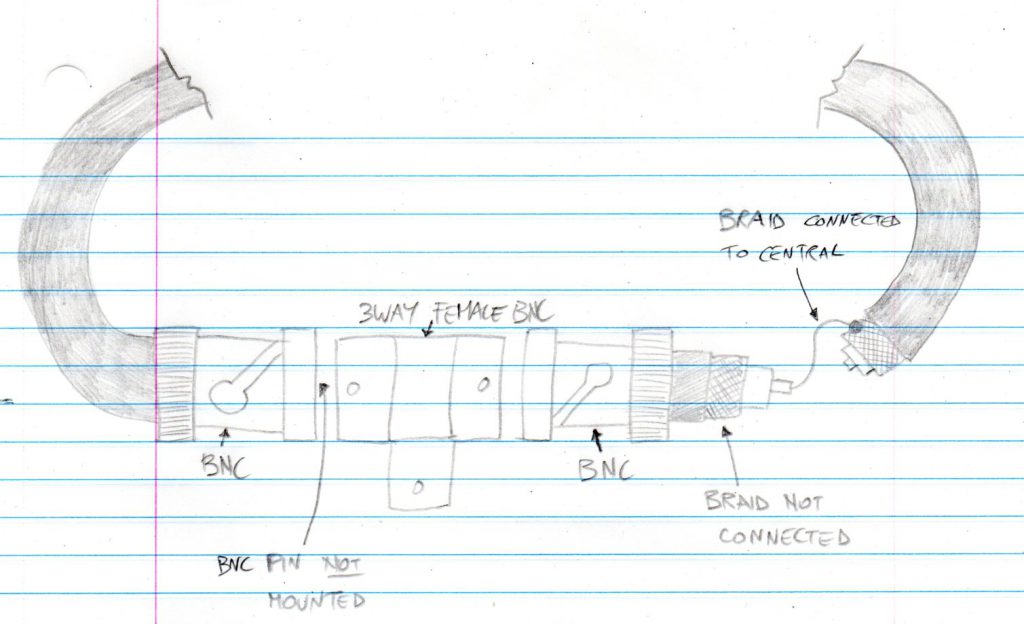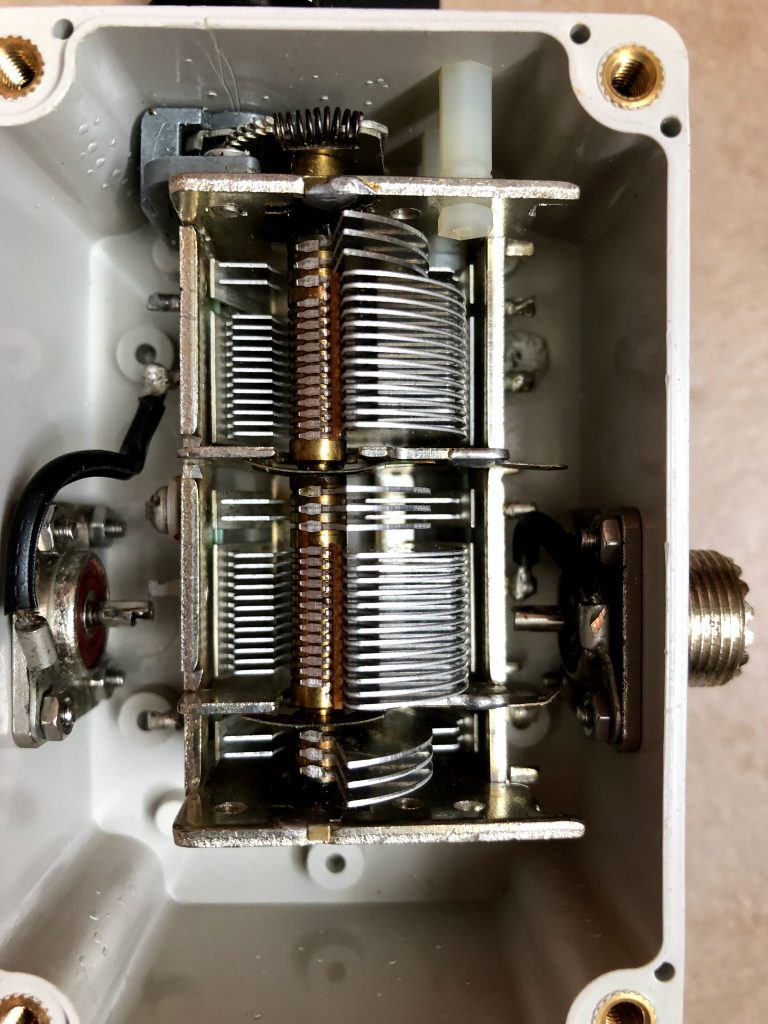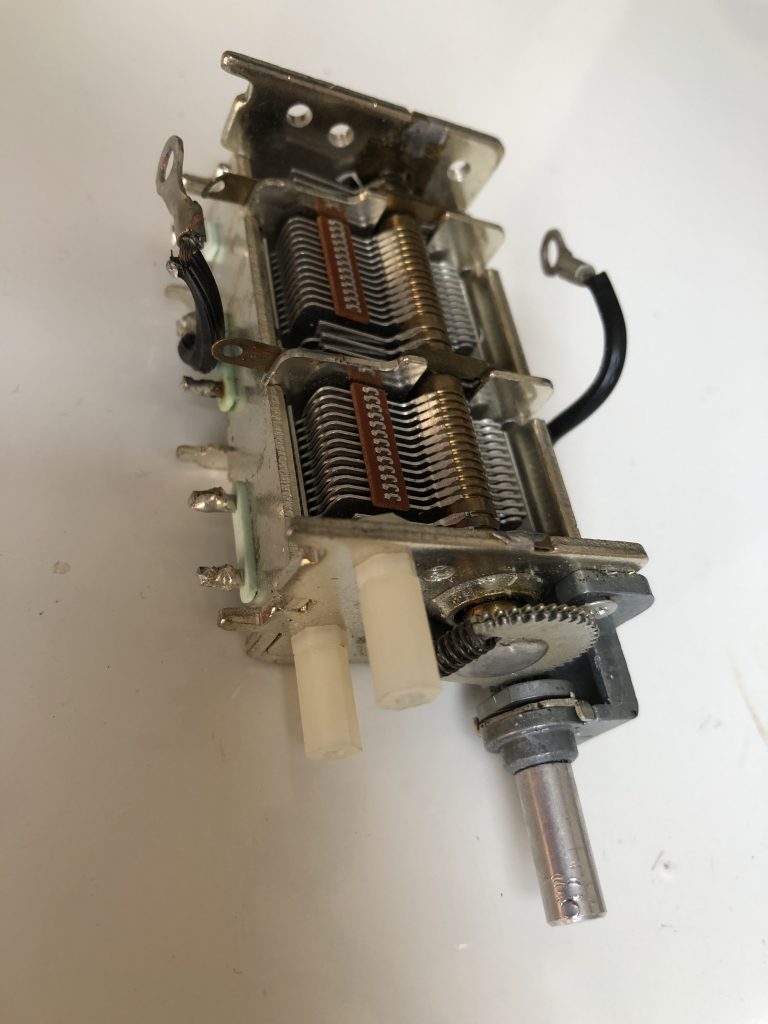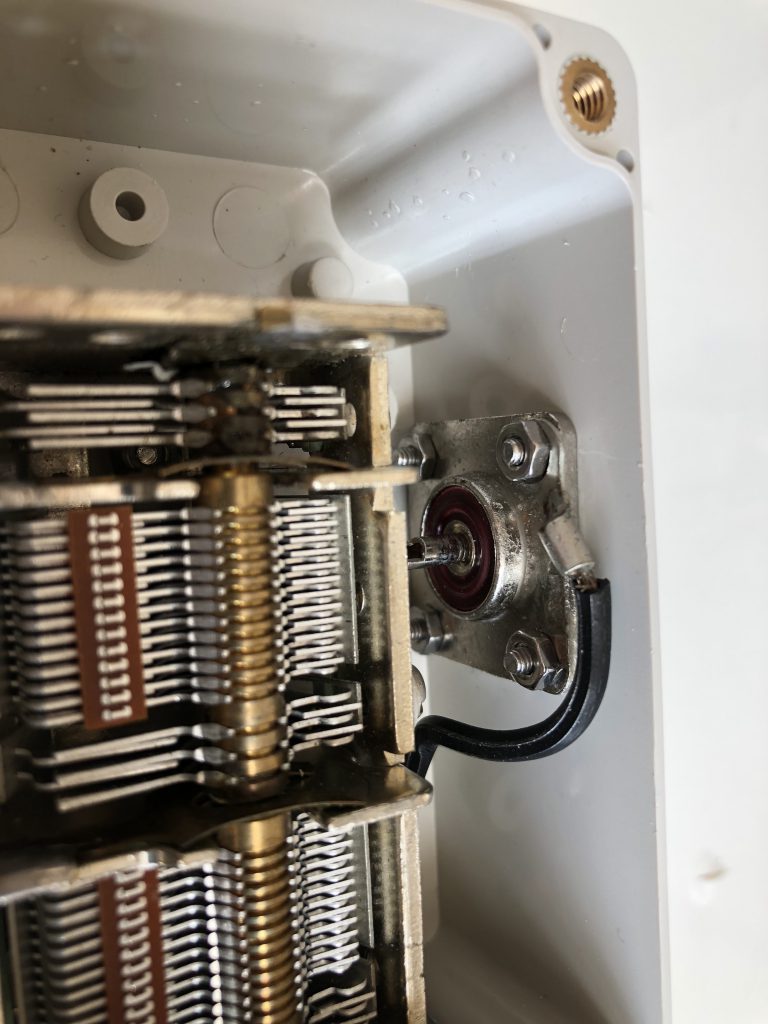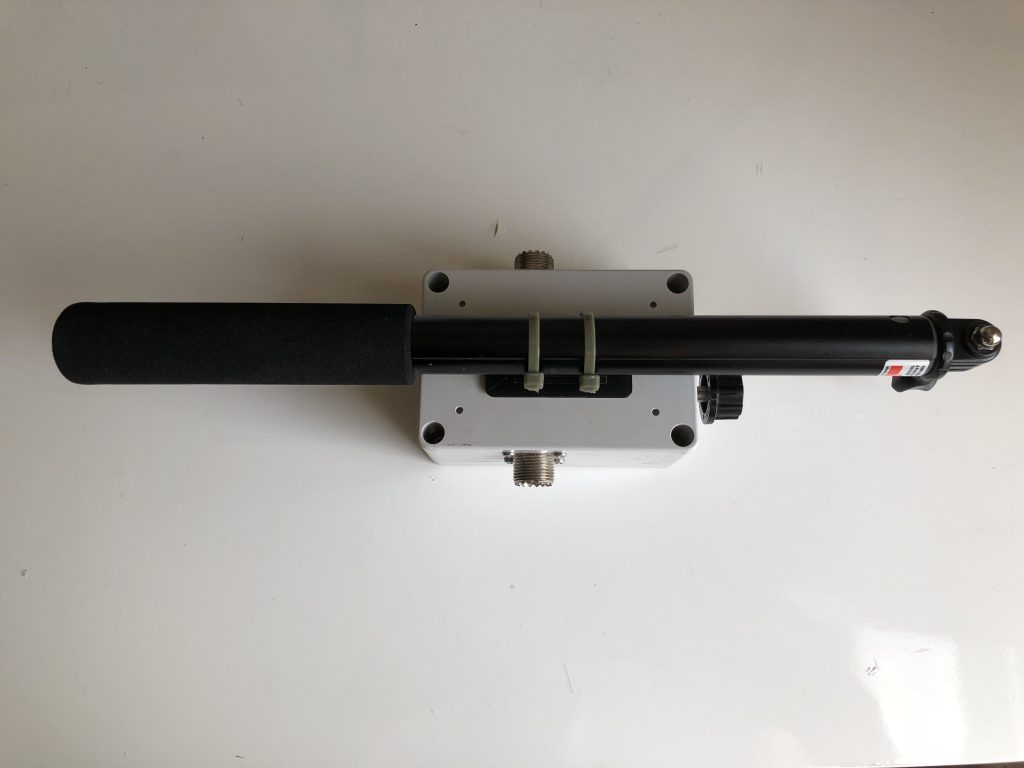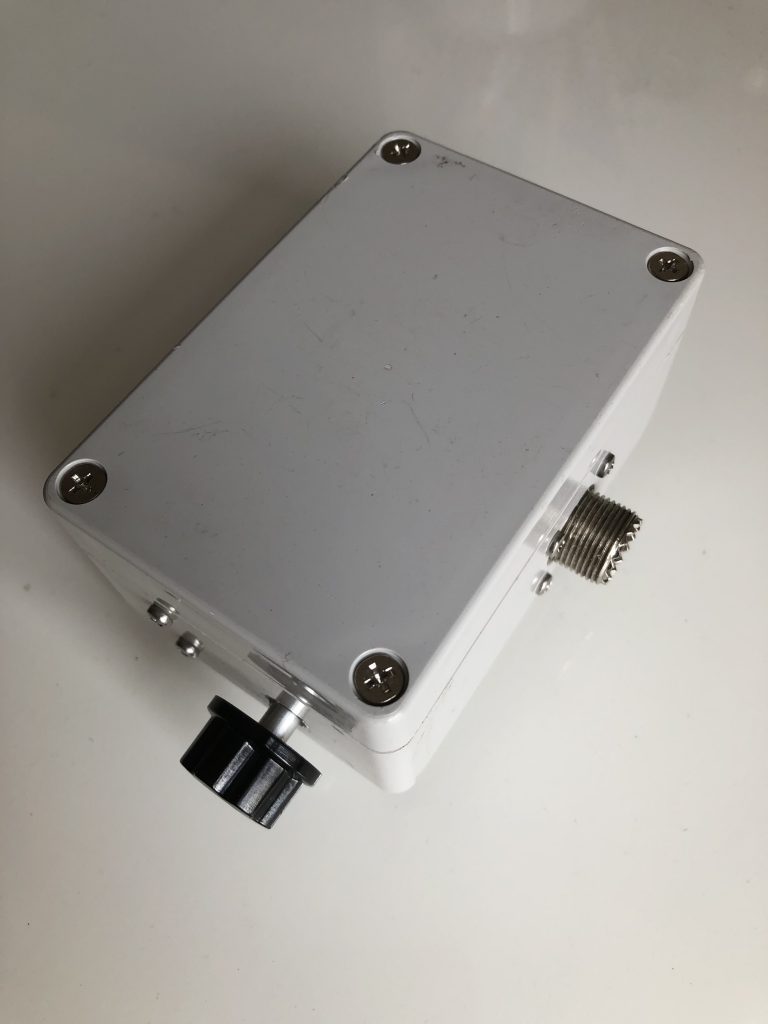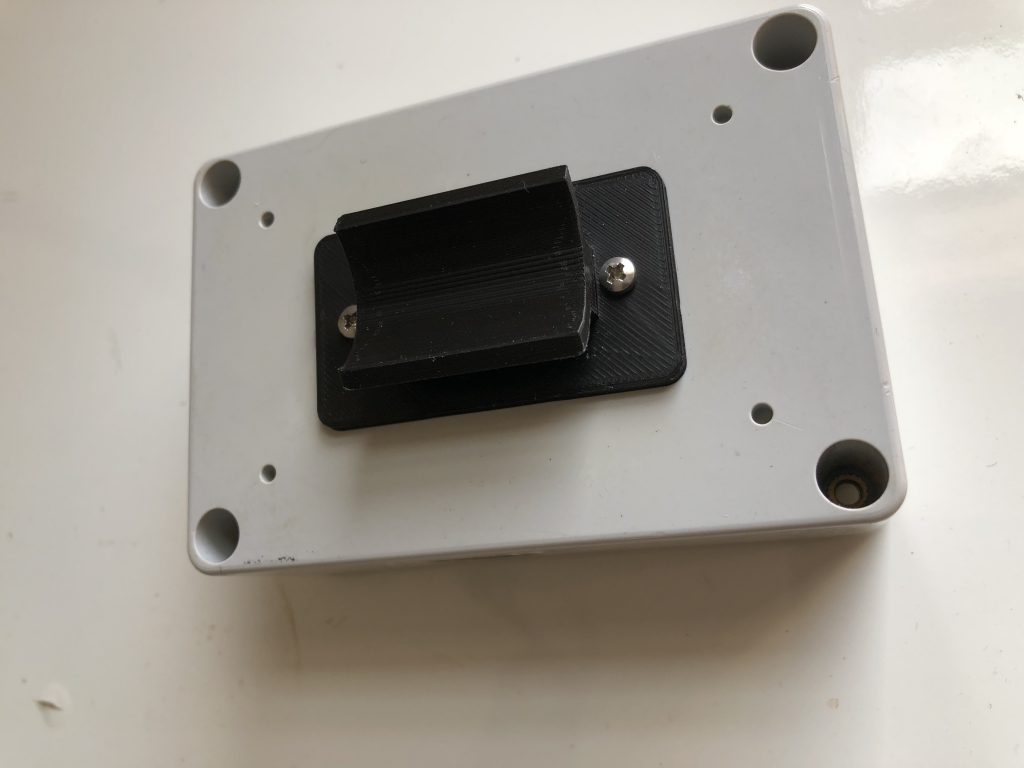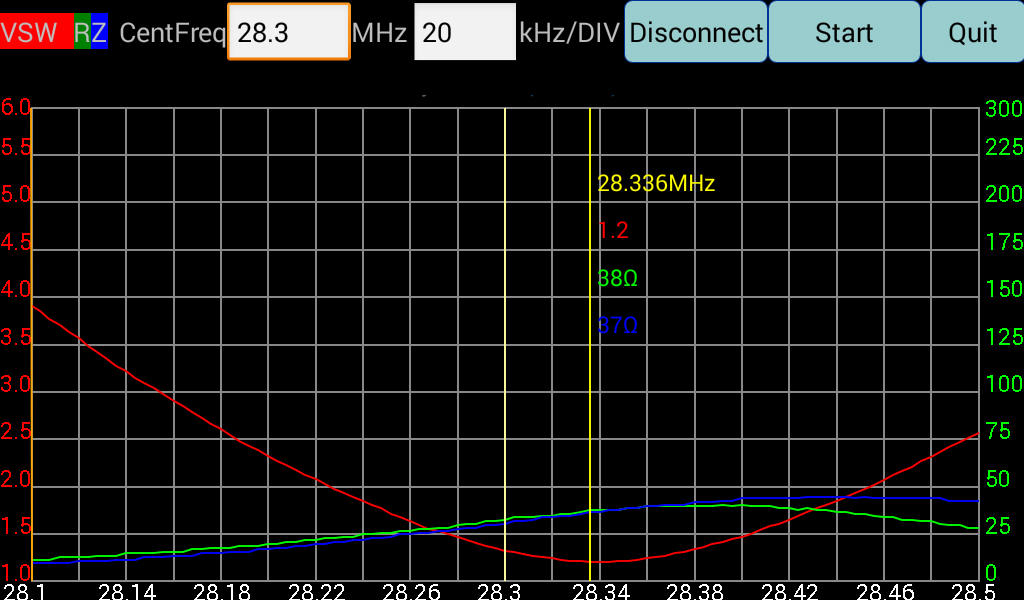July 2020: Check out the NEW loop !
After describing my mini loops (here and here), this time I am going to write about the classic “full size” version that I have been using for a while.

At Dayton the Hamvention of 2018 I took my loop with me and I mounted it on a PVC support that fitted a military style backpack. It made quite a splash! Eventually, someone took a picture that ended up on the August 2018 QST and the 2019 ARRL Calendar front-covers. That’s when I proposed the QST editors an article which described how to make the antenna. QST accepted but took its time, finally publishing the article with the May 2019 edition.
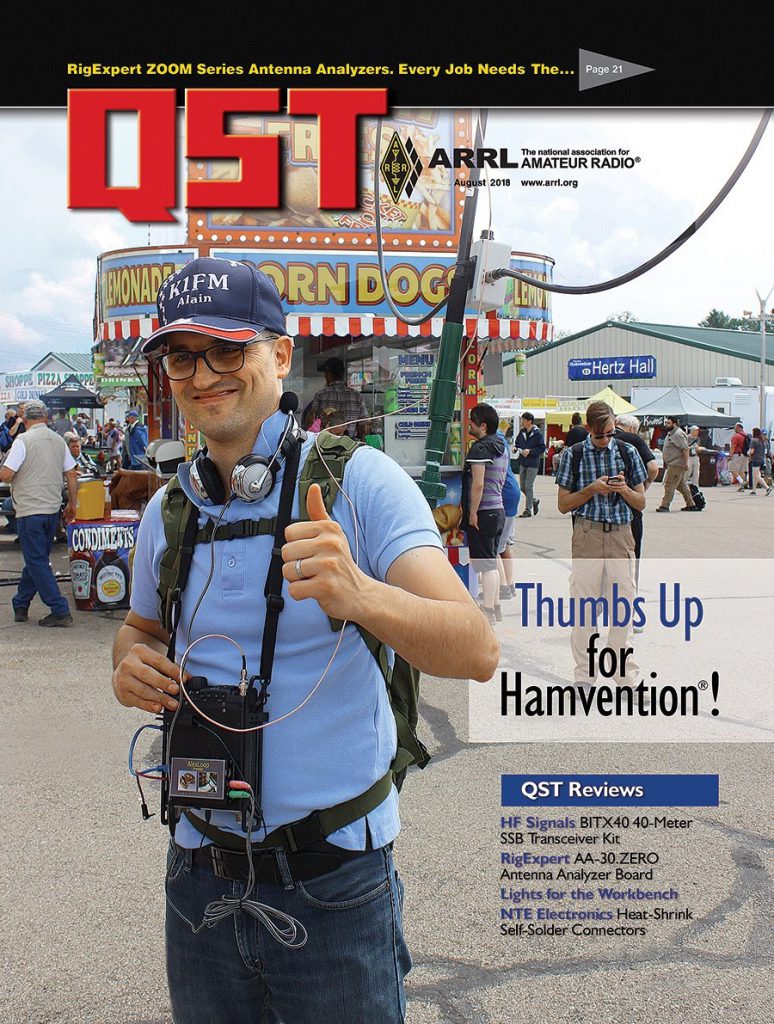
The K1FM Loop consists of a LMR400 radiator (124″) fed by an LMR240 exciter (25″). The radiator loop is terminated by a geared, multi-stator variable capacitor made by Alps (14pF to 165pF, P/N 42-36251-1). The exciter, instead, is constructed to be terminated by a 3way BNC adapter.
The geared capacitor and the loop configuration have been inspired by the AlexLoop while the exciter construction and the selfie stick by Alpha Loop.
The exciter loop takes a bit of patience in order to be manufactured this way. Quite a bit, actually. Of course more classic approaches can be used as long as the overall size remains the same.
Both loops are mounted on the selfie stick using a custom 3D printed bracket that fits on standard camera mounts.
The other critical aspect of this project is obviously the capacitor. It is the capacitor which defines the bands you can use, the resolution you get (how “touchy” the loop will be…) and – last but not least – how much power the loop will be able to handle. The 15-165pF geared type is some kind of a sweet spot, a very good compromise for a loop this size when used QRP.
Unfortunately Alps no longer makes this capacitor but from time to time they pop-up on Ebay for about $20 each.
You can, of course, replace this capacitor with equivalent ones (similar, non geared capacitors are more common and much easier to find).
The capacitor enclosure is fundamentally just a box that holds the capacitor against the selfie stick, connecting it to the radiator loop.
The box I used is made by uxcell and measures 3.9″ by 2.6″ by 2″. I mount it against the stick using a custom 3D printed ABS bracket.
The list of all necessary materials, from the main loop to the last nylon screw, is here. Overall the cost for a single antenna should be around $60 but the final cost will vary depending on how much you will spend for the capacitor and for the 3D prints.
Performance of magnetic loops this size have been extensively analyzed and reviewed. Mine is no different than the others.
Please do not expect miracles! Ultra-Portable QRP is hard stuff and you will need to rely the 3 P’s: Propagation, Perseverance, Patience.
In a nutshell this loop performs at around the same level of full sized half-wave dipoles or of a vertical antennas. Yet, you are running 5W watts into it therefore plan for the right time, the right band and the right location if you want to work DX on voice.
All in all, I find it a bit lacking on 40 and I don’t use it on that band unless it is inevitable. 20 and 30 are very fine and – when conditions permit – so are 17, 15 and 10.
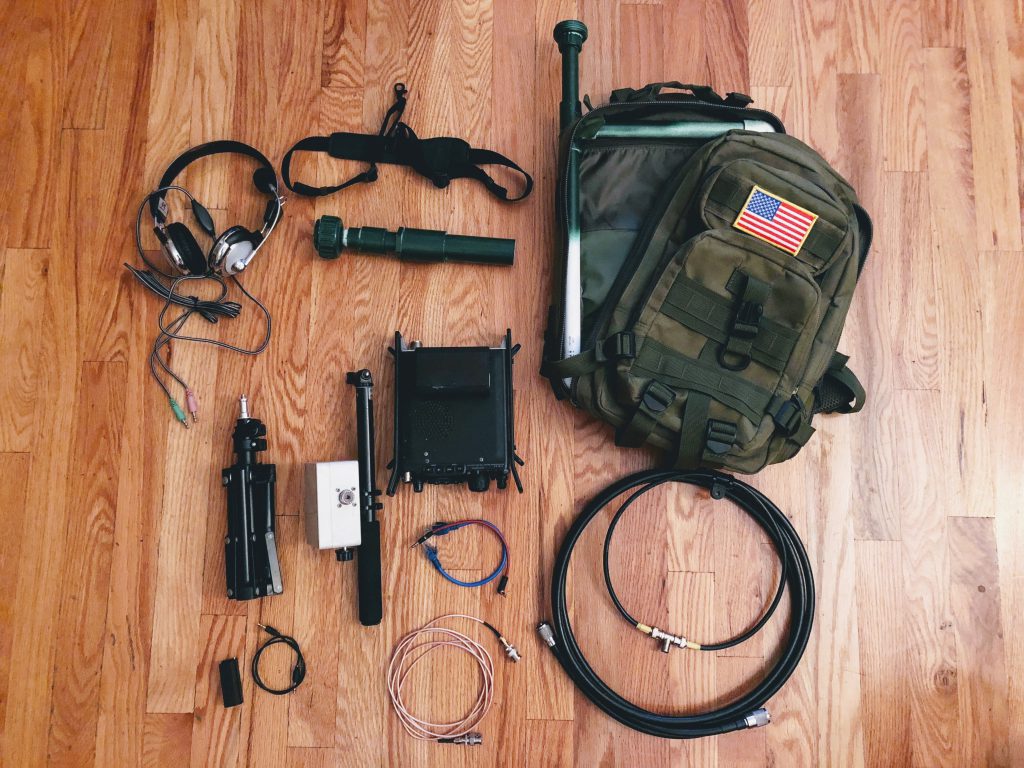
Other than the loop, I normally carry my FT-817, a WinCamp Headset adapter, a PC Headset, a Palm Radio CW Pico Paddle, a mini tripod and a military backpack with a PVC antenna mount.
I recently added FT8 and wireless headsets, but that’s going to be detailed in other posts.

Finally, I’d like to spend two words on RF safety.
As a licensed Amateur Radio operator you should already be aware of the following but I, for the sake of safety, I’ll repeat what you probably already know.
Loops can be dangerous around people.
Do not exceed power! By doing so you would irreparably scar your capacitor. If you really go heavy, you basically built a soldering machine: sparks will fly and fires might start.
Moreover, even when QRP, this loop will exceed FCC exposure guidelines when used in close proximity. To be on the safe side, nobody should be closer than 2 meters from this loop, regardless of how much power you are using. Finally, do not touch the radiator while transmitting because you could be burnt, electrocuted or both (~800V at 5W, ~4000V at 100W!).
